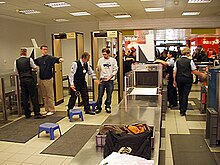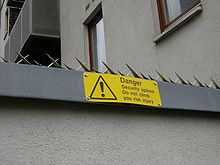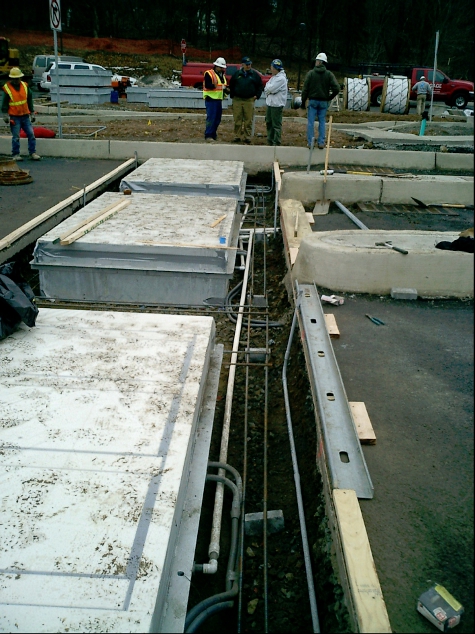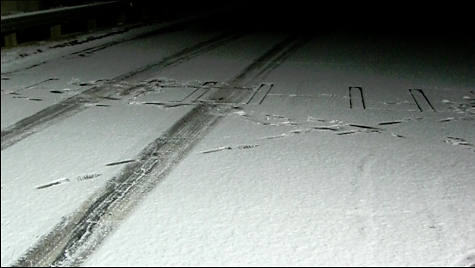History
Many factors have affected the development of personal armor
throughout human history. Significant factors in the development of
armor include the economic and technological necessities of armor
production. For instance plate armor first appeared in Medieval Europe
when water-powered
trip hammers
made the formation of plates faster and cheaper. Also modern militaries
usually do not provide the best armor to their forces since doing so
would be prohibitively costly. At times the development of armor has run
parallel to the development of increasingly effective weaponry on the
battlefield, with armorers seeking to create better protection without
sacrificing mobility.
Ancient
The oldest known western armor is the
Dendra panoply, dating from the
Mycenaean Era around 1400 B.C.
Mail,
also referred to as chainmail, is made of interlocking iron rings,
which may be riveted or welded shut. It is believed to have been
invented by the
Celtic people in
Eastern Europe about 500 B.C.
[citation needed] When these Celts moved West they took mail with them. Most cultures who used mail used the Celtic word
Byrnne or a variant, suggesting the Celts as the originators.
[1] [2] [3] The Romans adopted mail as the
lorica hamata, although they also made use of
lorica segmentata. While no non-metallic armor survives, a linen laminate known as
linothorax is repeatedly mentioned in ancient Greek sources.
In East Asian history laminated armor such as
lamellar, and styles similar to the
coat of plates, and
brigandine
were commonly used. Later cuirasses and plates were also used. In
pre-Qin dynasty times, leather armor was made out of rhinoceros. Chinese
influence in Japan would result in the Japanese adopting Chinese
styles, their
samurai armor being a result of this influence.
Middle Ages
In
European history, well-known armor types include the
mail hauberk of the early medieval age, and the full steel
plate harness worn by later
Medieval and
Renaissance knights,
and a few key components (breast and back plates) by heavy cavalry in
several European countries until the first year of World War I
(1914–15).
Plate
Main article:
Plate armour

Medieval European suits of armor appropriate for horse riders.
Gradually, small additional plates or discs of iron were added to the
mail to protect vulnerable areas. By the late 13th century, the knees
were capped, and two circular discs, called
besagews
were fitted to protect the underarms. A variety of methods for
improving the protection provided by mail were used as armorers
seemingly experimented.
[citation needed] Hardened leather and
splinted construction were used for arm and leg pieces. The
coat of plates was developed, an armor made of large plates sewn inside a textile or leather coat.
Early plate in Italy, and elsewhere in the 13th–15th century were made of iron. Iron armor could be
carburized or
case hardened to give a surface of harder steel.
[4]
Plate armor became cheaper than mail by the 15th century as it required
much less labor and labor had become much more expensive after the
Black Death,
though it did require larger furnaces to produce larger blooms. Mail
continued to be used to protect those joints which could not be
adequately protected by plate, such as the armpit, crook of the elbow
and groin. Another advantage of plate was that a lance rest could be
fitted to the breast plate.
[5]
The small skull cap evolved into a bigger true helmet, the
bascinet,
as it was lengthened downward to protect the back of the neck and the
sides of the head. Additionally, several new forms of fully enclosed
helmets were introduced in the late 14th century to replace the
great helm, such as the
sallet and
barbute and later the
armet and
close helm.
Probably the most recognized style of armor in the world became the
plate armor associated with the
knights of the European
Late Middle Ages, but continuing to the early 17th century
Age of Enlightenment in all European countries.
By about 1400 the full harness of plate armor had been developed in armories of Lombardy
[6] Heavy cavalry dominated the battlefield for centuries in part because of their armor.
In the early 15th century, small "
hand cannon" first began to be used, in the
Hussite Wars, in combination with
Wagenburg tactics, allowing infantry to defeat armored knights on the battlefield. At the same time
crossbows were made more powerful to pierce armor, and the development of the Swiss
Pike square
formation also created substantial problems for heavy cavalry. Rather
than dooming the use of body armor, the threat of small firearms
intensified the use and further refinement of plate armor. There was a
150 year period in which better and more metallurgically advanced steel
armor was being used, precisely because of the danger posed by the gun.
Hence, guns and cavalry in plate armor were "threat and remedy" together
on the battlefield for almost 400 years. By the 15th century Italian
armor plates were almost always made of steel.
[7]
In Southern Germany armorers began to harden their steel armor only in
the late 15th century. They would continue to harden their steel for the
next century because they
quenched and
tempered their product which allowed for the
fire-gilding to be combined with tempering.
[8]
The quality of the metal used in armor deteriorated as armies became
bigger and armor was made thicker, necessitating breeding of larger
cavalry horses. If during the 14–15th centuries armor seldom weighed
more than 15 kg, then by the late 16th century it weighed 25 kg.
[9] The increasing weight and thickness of late-16th-century armor therefore gave substantial resistance.
In the early years of pistol and
arquebuses,
firearms were relatively low in velocity. The full suits of armor, or
breast plates actually stopped bullets fired from a modest distance. The
front breast plates were, in fact, commonly shot as a test. The impact
point would often be encircled with engraving to point it out. This was
called the "proof". Armor often also bore an insignia of the maker,
especially if it was of good quality. Crossbow bolts, if still used,
would seldom penetrate good plate, nor would any bullet unless fired
from close range.
In effect, rather than making plate armor obsolete, the use of
firearms stimulated the development of plate armor into its later
stages. For most of that period, it allowed horsemen to fight while
being the targets of defending arquebuseers without being easily killed.
Full suits of armor were actually worn by generals and princely
commanders right up to the second decade of the 18th century. While
heavy, it permitted mounted commanders to survey a battlefield while
providing safety from musket fire.
Horse armor
The horse was afforded protection from lances and infantry weapons by steel plate
barding.
This gave the horse protection and enhanced the visual impression of a
mounted knight. Late in the era, elaborate barding was used in parade
armor.
Gunpowder era
As gunpowder weapons improved, it became cheaper and more effective
to have groups of unarmored men with early guns than to have expensive
knights, which caused armor to be largely discarded. Cavalry units
continued to use armor for longer. Example include the German
Reiter, Polish heavy
hussars and the back and breast worn by heavy cavalry units during the Napoleonic wars.
Anachronistic use of personal armor
Metal armor remained in limited use long after its general extinction. At the start of
World War I, thousands of the French
Cuirassiers
rode out to engage the German Cavalry who likewise used helmets and
armor. By that period, the shiny armor plate was covered in dark paint
and a canvas wrap covered their elaborate Napoleonic-style helmets.
Their armor was meant to protect only against
sabers and light
lances. The cavalry had to beware of high velocity
rifles and
machine guns like the foot soldiers, who at least had a
trench to protect them.
Soldiers in the
American Civil War
bought iron and steel vests from peddlers (both sides had considered
but rejected it for standard issue). The effectiveness of the vests
varied widely—some successfully deflected bullets and saved lives but
others were poorly made and resulted in tragedy for the soldiers. In any
case the vests were abandoned by many soldiers due to their weight on
long marches as well as the stigma they got for being cowards from their
fellow troops.
Modern armor
Soldiers use metal or ceramic plates in their
battledress, providing additional protection from
rifle rounds. Metallic components or tightly-woven fiber layers can give soft armor resistance to stab and slash attacks from a
knife.
Mail armor continues to be used as protection against stab/slash attacks.
Fibers
Kevlar is well known as a component of some
bullet resistant vests and
bullet resistant face masks. The
PASGT helmet and vest used by
United States
military forces since the early 1980s both have Kevlar as a key
component, as do their replacements. Other military uses include bullet
resistant facemasks used by sentries. Civilian applications include
Kevlar reinforced clothing for motorcycle riders to protect against
abrasion injuries.
Kevlar
in non-woven long strand form is used inside an outer protective cover
to form chaps that loggers use while operating a chainsaw. If the moving
chain contacts and tears through the outer cover, the long fibers of
Kevlar tangle, clog, and stop the chain from moving as they get drawn
into the workings of the drive mechanism of the saw. Kevlar is used also
in Emergency Service's protection gear if it involves high heat (e.g.,
tackling a fire), and Kevlar such as vests for police officers,
security, and
SWAT.
Protected areas
Shield
A
shield
is held in the hand or arm. Its purpose is to intercept attacks, either
by stopping projectiles such as arrows or by glancing a blow to the
side of the shield-user. Shields vary greatly in size, ranging from
large shields that protect the user's entire body to small shields that
are mostly for use in hand-to-hand combat. Shields also vary a great
deal in thickness; whereas some shields were made of thick wooden
planking, to protect soldiers from spears and crossbow bolts, other
shields were thinner and designed mainly for glancing blows away (such
as a sword blow). In prehistory, shields were made of wood, animal hide,
or wicker. In antiquity and in the Middle Ages, shields were used by
foot soldiers and mounted soldiers. Even after the invention of
gunpowder and firearms, shields continued to be used. In the 18th
century, Scottish clans continued to use small shields, and in the 19th
century, some non-industrialized peoples continued to use shields. In
the 20th and 21st century, shields are used by military and police units
that specialize in anti-terrorist action, hostage rescue, and
siege-breaching.
Torso
A
ballistic vest helps absorb the impact from
firearm-fired
projectiles and
shrapnel from explosions, and is worn on the
torso.
Soft vests are made from many layers of woven or laminated fibers and
can be capable of protecting the wearer from small caliber
handgun and
shotgun projectiles, and small fragments from explosives such as
hand grenades.
Metal or ceramic plates can be used with a soft vest, providing additional protection from
rifle rounds, and metallic components or tightly-woven fiber layers can give soft armor resistance to stab and slash attacks from a
knife. Soft vests are commonly worn by
police forces, private citizens and private
security guards or
bodyguards, whereas hard-plate reinforced vests are mainly worn by combat soldiers, police tactical units and hostage rescue teams.
Modern equivalent may combine a ballistic vest with other items of protective clothing, such as a
combat helmet.
Vests intended for police and military use may also include ballistic
shoulder and side protection armor components, and explosive ordnance
disposal technicans wear heavy armor and helmets with face visors and
spine protection.
Head
A
combat helmet is among the oldest forms of
personal protective equipment, and are known to have been worn by the
Assyrians around 900BC, followed by the
ancient Greeks and
Romans, throughout the
Middle Ages, and up to the end of the 17th century by many combatants.
[10] Their materials and construction became more advanced as weapons became more and more powerful. Initially constructed from
leather and
brass, and then
bronze and
iron during the
Bronze and
Iron Ages, they soon came to be made entirely from forged
steel in many societies after about 950AD.
[11] At that time, they were purely military equipment, protecting the head from cutting blows with
swords, flying
arrows, and low-velocity
musketry.
Many medieval helmets rested on the shoulders and prevented the wearer
from turning his or her head, greatly restricting mobility. During the
18th and 19th centuries, helmets were not widely used in warfare,
instead many armies used non-armored hats that offered no protection
against blade or bullet. The arrival of World War I, with its trench
warfare and wide use of artillery, led to mass adoption of metal helmets
once again, this time with a shape that offered mobility, a low
profile, and compatibility with gas masks. Today's militaries often use
high-quality helmets made of ballistic materials such as
Kevlar and
Aramid,
which have excellent bullet and fragmentation stopping power. Some
helmets also have good non-ballistic protective qualities, though many
do not.
[12] Non-ballistic injuries may be caused by many things, such as concussive
shockwaves from
explosions, physical attacks, motor vehicle accidents, or falls.
[13]
A
ballistic face mask is designed to protect the wearer from ballistic threats. Ballistic face masks are usually made of
kevlar
or other bullet resistant materials and the inside of the mask may be
padded for shock absorption, depending on the design. Due to weight
restrictions, protection levels range only up to
NIJ Level IIIA.
Limbs
Medieval armor often offered protection for all of the limbs,
including metal boots for the lower legs, gauntlets for the hands and
wrists, and greaves for the legs. Today, protection of
limbs from bombs is provided by a
bombsuit.
Most modern soldiers sacrifice limb protection for mobility, since
armor thick enough to stop bullets would greatly inhibit movement of the
arms and legs.
Performance standards
Due to the various different types of projectile, it is often inaccurate to refer to a particular product as "
bulletproof" because this implies that it will protect against any and all threats. Instead, the term
bullet resistant is generally preferred.
The standards are regional. Around the world ammunition varies and as
a result the armor testing must reflect the threats found locally. Law
enforcement statistics show that many shootings where officers are
injured or killed involve the officer's weapon
[citation needed].
As a result each law enforcement agency or para-military organizations
will have their own standard for armor performance if only to ensure
that their armor protects them from their own weapon. While many
standards exist a few standards are widely used as models. The US
National Institute of Justice
ballistic and stab documents are examples of broadly accepted
standards. In addition to the NIJ, the United Kingdom's Home Office
Scientific Development Branch (HOSDB—formerly the Police Scientific
Development Branch (PSDB)) standards are also used by a number of other
countries and organizations. These "model" standards are usually adapted
by other countries by incorporation of the basic test methodologies
with modification of the bullets that are required for test. NIJ
Standard-0101.06 has specific performance
standards
for bullet resistant vests used by law enforcement. This rates vests on
the following scale against penetration and also blunt trauma
protection (deformation

 Careful integration of components makes the UVSS
system a cost-effective and convenient solution
for checking passenger vehicles, vans, buses, semitractor
truck and trailers, and more. It’s an ideal
solution for governmental, military, corporate, and
transportation facilities—wherever complete vehicle
monitoring is required.
Careful integration of components makes the UVSS
system a cost-effective and convenient solution
for checking passenger vehicles, vans, buses, semitractor
truck and trailers, and more. It’s an ideal
solution for governmental, military, corporate, and
transportation facilities—wherever complete vehicle
monitoring is required. Security is the degree of protection to safeguard a nation, union of nations, persons or person against danger, damage, loss, and crime. Security as a form of protection are structures and processes that provide or improve security as a condition. The Institute for Security and Open Methodologies (ISECOM) in the OSSTMM
3 defines security as "a form of protection where a separation is
created between the assets and the threat". This includes but is not
limited to the elimination of either the asset or the threat. Security
as a national condition was defined in a United Nations study (1986)[citation needed], so that countries can develop and progress safely.
Security is the degree of protection to safeguard a nation, union of nations, persons or person against danger, damage, loss, and crime. Security as a form of protection are structures and processes that provide or improve security as a condition. The Institute for Security and Open Methodologies (ISECOM) in the OSSTMM
3 defines security as "a form of protection where a separation is
created between the assets and the threat". This includes but is not
limited to the elimination of either the asset or the threat. Security
as a national condition was defined in a United Nations study (1986)[citation needed], so that countries can develop and progress safely.
 Perceived security compared to real security
Perceived security compared to real security










 TECHNOLOGY
TECHNOLOGY









